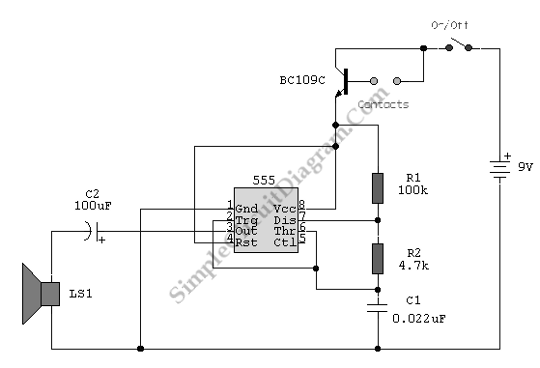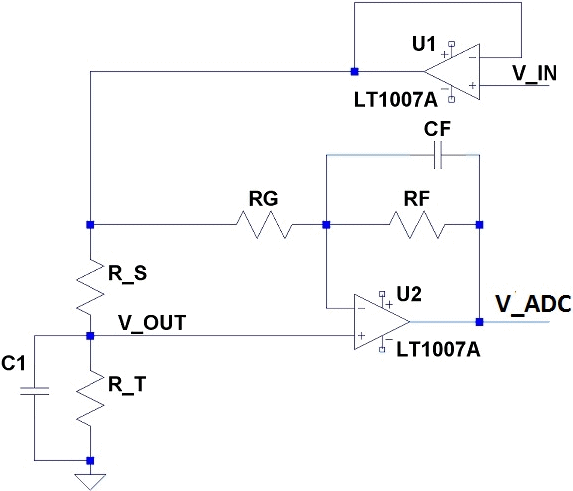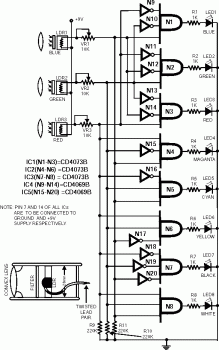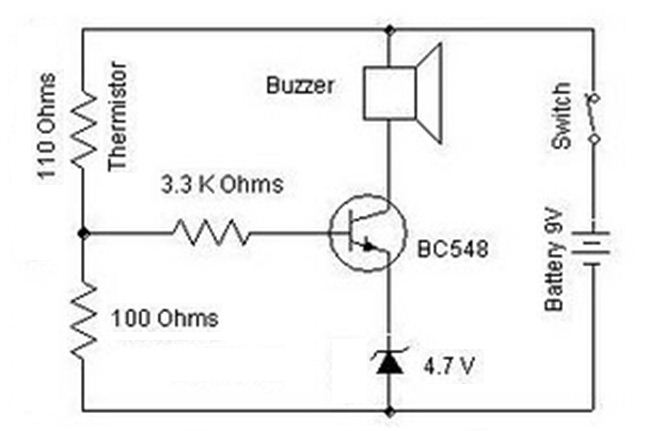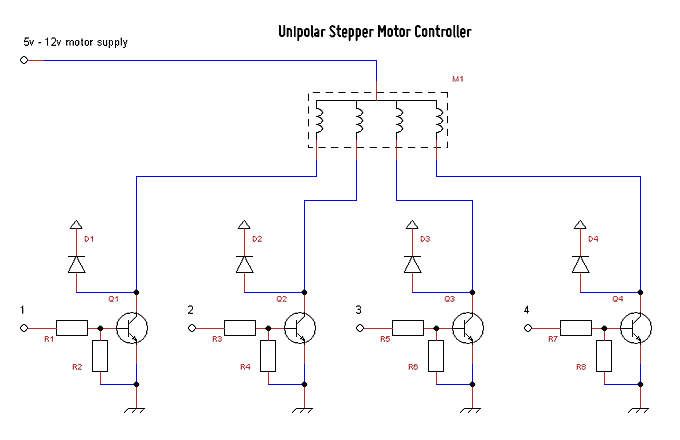
Capacitive Sensor
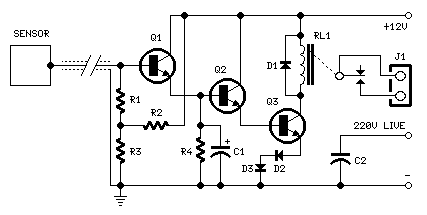
Q1, Q2, and Q3 form a high-impedance super-Darlington configuration that drives the relay, amplifying the 50 or 60 Hz alternating mains supply frequency induced in the sensor by the human body. Capacitors C1, D2, and D3 ensure clean switching of the relay. The power supply can be any commercial wall plug-in transformer adapter with a rectifier and smoothing capacitor, capable of supplying the voltage and current necessary to power the relay intended for use. For proper operation, the circuit ground must be connected via a small value, high voltage-rated capacitor to one side of the mains supply socket, with the "Live" side being the correct connection.
The circuit utilizes a super-Darlington transistor configuration formed by Q1, Q2, and Q3, which is designed to achieve high input impedance and significant current gain. This configuration is particularly effective for detecting low-level signals, such as those induced by the human body through capacitive coupling. The alternating current (AC) frequency of 50 or 60 Hz from the mains supply is amplified, allowing the relay to switch on in response to human presence.
Capacitor C1 serves as a coupling capacitor, blocking any direct current (DC) components and allowing only the AC signal to pass through to the base of the Darlington pair. Diodes D2 and D3 are used for flyback protection, ensuring that any back EMF generated by the relay coil during switching does not damage the transistor components. This arrangement results in a reliable and efficient relay operation.
The power supply requirement specifies the use of a commercial wall plug-in transformer adapter. This adapter should have an integrated rectifier and smoothing capacitor to convert the AC voltage to a stable DC voltage suitable for the relay operation. It is vital that the power supply can deliver adequate current to meet the relay's specifications.
For safety and proper circuit functionality, it is crucial that the circuit ground is connected through a small value, high voltage-rated capacitor to one side of the mains supply socket. This connection helps to isolate the circuit from the mains while allowing it to sense the AC signal. The "Live" side of the mains supply socket must be identified and connected correctly to ensure the circuit operates safely and effectively.Q1, Q2 & Q3 form a high impedance super-Darlington that drives the relay, amplifying the 50 or 60Hz alternate mains-supply frequency induced in the sensor by the human body. C1, D2 & D3 ensure a clean switching of the relay. Power supply can be any commercial wall plug-in transformer adapter with rectifier and smoothing capacitor, capable of suppl
ying the voltage and current necessary to power the relay you intend to use. * For proper operation, circuit ground must be connected via a small value, high voltage-rating capacitor to one side of the mains supply socket. The "Live" side is the right one. 🔗 External reference
The circuit utilizes a super-Darlington transistor configuration formed by Q1, Q2, and Q3, which is designed to achieve high input impedance and significant current gain. This configuration is particularly effective for detecting low-level signals, such as those induced by the human body through capacitive coupling. The alternating current (AC) frequency of 50 or 60 Hz from the mains supply is amplified, allowing the relay to switch on in response to human presence.
Capacitor C1 serves as a coupling capacitor, blocking any direct current (DC) components and allowing only the AC signal to pass through to the base of the Darlington pair. Diodes D2 and D3 are used for flyback protection, ensuring that any back EMF generated by the relay coil during switching does not damage the transistor components. This arrangement results in a reliable and efficient relay operation.
The power supply requirement specifies the use of a commercial wall plug-in transformer adapter. This adapter should have an integrated rectifier and smoothing capacitor to convert the AC voltage to a stable DC voltage suitable for the relay operation. It is vital that the power supply can deliver adequate current to meet the relay's specifications.
For safety and proper circuit functionality, it is crucial that the circuit ground is connected through a small value, high voltage-rated capacitor to one side of the mains supply socket. This connection helps to isolate the circuit from the mains while allowing it to sense the AC signal. The "Live" side of the mains supply socket must be identified and connected correctly to ensure the circuit operates safely and effectively.Q1, Q2 & Q3 form a high impedance super-Darlington that drives the relay, amplifying the 50 or 60Hz alternate mains-supply frequency induced in the sensor by the human body. C1, D2 & D3 ensure a clean switching of the relay. Power supply can be any commercial wall plug-in transformer adapter with rectifier and smoothing capacitor, capable of suppl
ying the voltage and current necessary to power the relay you intend to use. * For proper operation, circuit ground must be connected via a small value, high voltage-rating capacitor to one side of the mains supply socket. The "Live" side is the right one. 🔗 External reference
